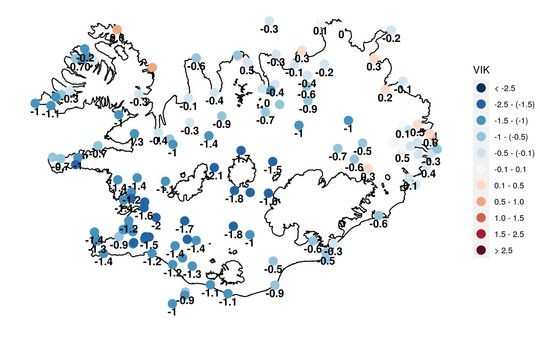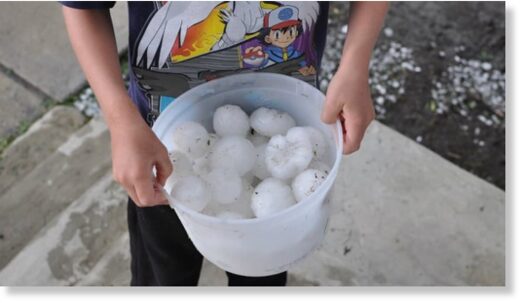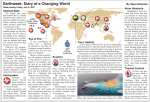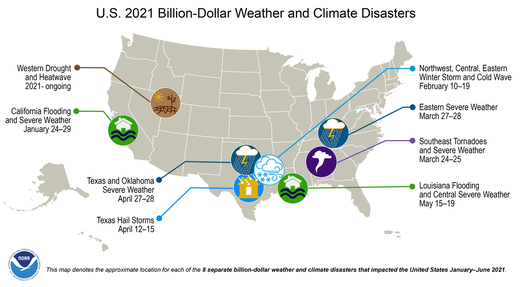TxGal
Day by day
Australia braces for a Polar Blast as New Zealand suffers -11.2C (11.8F) (electroverse.net)

Extreme Weather GSM
AUSTRALIA BRACES FOR ANOTHER POLAR BLAST, AS NEW ZEALAND SUFFERS -11.2C (11.8F)
JULY 5, 2021 CAP ALLON
The MSM can cherry-pick and obfuscate to their heart’s content, the fact remains that planet Earth is cooling, down more than 0.7C since the start of 2016:

 electroverse.net
electroverse.net
AUSTRALIA BRACES FOR ANOTHER POLAR BLAST
An Antarctic blast is creeping across inland NSW sending the mercury plummeting into negative territory.
Overnight lows of -4C (24.8F) are forecast in Orange in the coming days, with similar record-challenging lows expected for Mudgee.
“Until Thursday it will be colder than average with morning frost and fog for inland NSW,” the Bureau of Meteorology (BOM) tweeted Sunday night:
View: https://twitter.com/BOM_NSW/status/1411783958208131077
Widespread snow will accompany the cold, particularly for inland NSW.
Sub-zero cold (C) will hit the ranges, with some locales suffering -7C (19.4F), the BOM warned.

GFS 2m Temp Anomalies (C) for Monday, July 5 [tropicaltidbits.com].
Bureau meteorologist Melody Sturm said a high pressure system parked over the west of the state was bringing clear skies and light winds: “Throughout the night –with those clear skies and light winds– temperatures can drop quite significantly,” she said. “Definitely in those clear areas it’s freezing, below zero actually.”
The cold front is forecast to move over Victoria’s western border at Mount Gambier before hitting western and central parts of Victoria: “We’ve got a cold front associated with a deep low pressure system that is currently in the Southern Ocean and will move into the Bass Strait,” continued Sturm; “with it comes some very cold air.”
Icy nights will be the norm all week for many, reports news.com.au.
And looking further ahead, the models are suggesting an even colder blast of polar cold could strike central and eastern parts later in the month:

GFS 2m Temp Anomalies (C) July 19 – July 21 [tropicaltidbits.com].
The polar injection is also currently on course to deliver substantial snow totals to NWS, Victoria and Tasmania as the month of July progresses:

GFS Total Snowfall (cm) July 5 – July 21 [tropicaltidbits.com].
Stay tuned for updates.
NEW ZEALAND SUFFERS -11.2C (4.5F)
Winter showed its mighty hand in New Zealand Monday, reports nzherald.co.nz, as the mercury dropped to a kiwi-hugging -11.2C (11.8F) in Waiouru–a small town in the Ruapehu District, in NZ’s North Island.
St Arnaud, in the Tasman district, was the next coldest locale, at -9.4C (15F).
While Pūkaki aerodrome finished third, logging a low of -7.7C (18.1F).
Meteorologist Lewis Ferris said a high pressure weather system sitting over the country the past few days had resulted in the very cold temperatures. And while it may have been the first time temperatures have dropped that low this winter, it won’t be the last time, warned the MetService.
The service sees further powerful polar blasts sweeping NZ over the coming days and weeks, as the Antarctic continent –which is suffering a very cold start to winter– continues to fling frigid air masses unusually-far north on the back of a low solar activity induced meridional jet stream flow.

 electroverse.net
electroverse.net
And finally, in other news –and in the other hemisphere– June in Iceland finished-up much colder than average.
Negative anomalies between -1C and –1.5C prevailed in the SW (below the 1991-2020 baseline):

[vedur.is]
The COLD TIMES are returning, the mid-latitudes are REFREEZING, in line with the great conjunction, historically low solar activity, cloud-nucleating Cosmic Rays, and a meridional jet stream flow (among other forcings).
Both NOAA and NASA appear to agree, if you read between the lines, with NOAA saying we’re entering a ‘full-blown’ Grand Solar Minimum in the late-2020s, and NASA seeing this upcoming solar cycle (25) as “the weakest of the past 200 years”, with the agency correlating previous solar shutdowns to prolonged periods of global cooling here.
Furthermore, we can’t ignore the slew of new scientific papers stating the immense impact The Beaufort Gyre could have on the Gulf Stream, and therefore the climate overall.


Prepare accordingly— learn the facts, relocate if need be, and grow your own.

Extreme Weather GSM
AUSTRALIA BRACES FOR ANOTHER POLAR BLAST, AS NEW ZEALAND SUFFERS -11.2C (11.8F)
JULY 5, 2021 CAP ALLON
The MSM can cherry-pick and obfuscate to their heart’s content, the fact remains that planet Earth is cooling, down more than 0.7C since the start of 2016:

Earth's Temperature Fell BELOW the 30-Year Baseline in June
The "bigger picture" is what the climate alarmists tell us to look at, and the bigger picture reveals GLOBAL COOLING.
AUSTRALIA BRACES FOR ANOTHER POLAR BLAST
An Antarctic blast is creeping across inland NSW sending the mercury plummeting into negative territory.
Overnight lows of -4C (24.8F) are forecast in Orange in the coming days, with similar record-challenging lows expected for Mudgee.
“Until Thursday it will be colder than average with morning frost and fog for inland NSW,” the Bureau of Meteorology (BOM) tweeted Sunday night:
View: https://twitter.com/BOM_NSW/status/1411783958208131077
Widespread snow will accompany the cold, particularly for inland NSW.
Sub-zero cold (C) will hit the ranges, with some locales suffering -7C (19.4F), the BOM warned.

GFS 2m Temp Anomalies (C) for Monday, July 5 [tropicaltidbits.com].
Bureau meteorologist Melody Sturm said a high pressure system parked over the west of the state was bringing clear skies and light winds: “Throughout the night –with those clear skies and light winds– temperatures can drop quite significantly,” she said. “Definitely in those clear areas it’s freezing, below zero actually.”
The cold front is forecast to move over Victoria’s western border at Mount Gambier before hitting western and central parts of Victoria: “We’ve got a cold front associated with a deep low pressure system that is currently in the Southern Ocean and will move into the Bass Strait,” continued Sturm; “with it comes some very cold air.”
Icy nights will be the norm all week for many, reports news.com.au.
And looking further ahead, the models are suggesting an even colder blast of polar cold could strike central and eastern parts later in the month:

GFS 2m Temp Anomalies (C) July 19 – July 21 [tropicaltidbits.com].
The polar injection is also currently on course to deliver substantial snow totals to NWS, Victoria and Tasmania as the month of July progresses:

GFS Total Snowfall (cm) July 5 – July 21 [tropicaltidbits.com].
Stay tuned for updates.
NEW ZEALAND SUFFERS -11.2C (4.5F)
Winter showed its mighty hand in New Zealand Monday, reports nzherald.co.nz, as the mercury dropped to a kiwi-hugging -11.2C (11.8F) in Waiouru–a small town in the Ruapehu District, in NZ’s North Island.
St Arnaud, in the Tasman district, was the next coldest locale, at -9.4C (15F).
While Pūkaki aerodrome finished third, logging a low of -7.7C (18.1F).
Meteorologist Lewis Ferris said a high pressure weather system sitting over the country the past few days had resulted in the very cold temperatures. And while it may have been the first time temperatures have dropped that low this winter, it won’t be the last time, warned the MetService.
The service sees further powerful polar blasts sweeping NZ over the coming days and weeks, as the Antarctic continent –which is suffering a very cold start to winter– continues to fling frigid air masses unusually-far north on the back of a low solar activity induced meridional jet stream flow.

Antarctica is suffering a near-record breaking winter - 10C colder than usual - Electroverse
Antarctica is experiencing an unusually cold start to winter, cold which is threatening the icy continent's lowest temp ever recorded.
And finally, in other news –and in the other hemisphere– June in Iceland finished-up much colder than average.
Negative anomalies between -1C and –1.5C prevailed in the SW (below the 1991-2020 baseline):

[vedur.is]
The COLD TIMES are returning, the mid-latitudes are REFREEZING, in line with the great conjunction, historically low solar activity, cloud-nucleating Cosmic Rays, and a meridional jet stream flow (among other forcings).
Both NOAA and NASA appear to agree, if you read between the lines, with NOAA saying we’re entering a ‘full-blown’ Grand Solar Minimum in the late-2020s, and NASA seeing this upcoming solar cycle (25) as “the weakest of the past 200 years”, with the agency correlating previous solar shutdowns to prolonged periods of global cooling here.
Furthermore, we can’t ignore the slew of new scientific papers stating the immense impact The Beaufort Gyre could have on the Gulf Stream, and therefore the climate overall.


Prepare accordingly— learn the facts, relocate if need be, and grow your own.

















































































